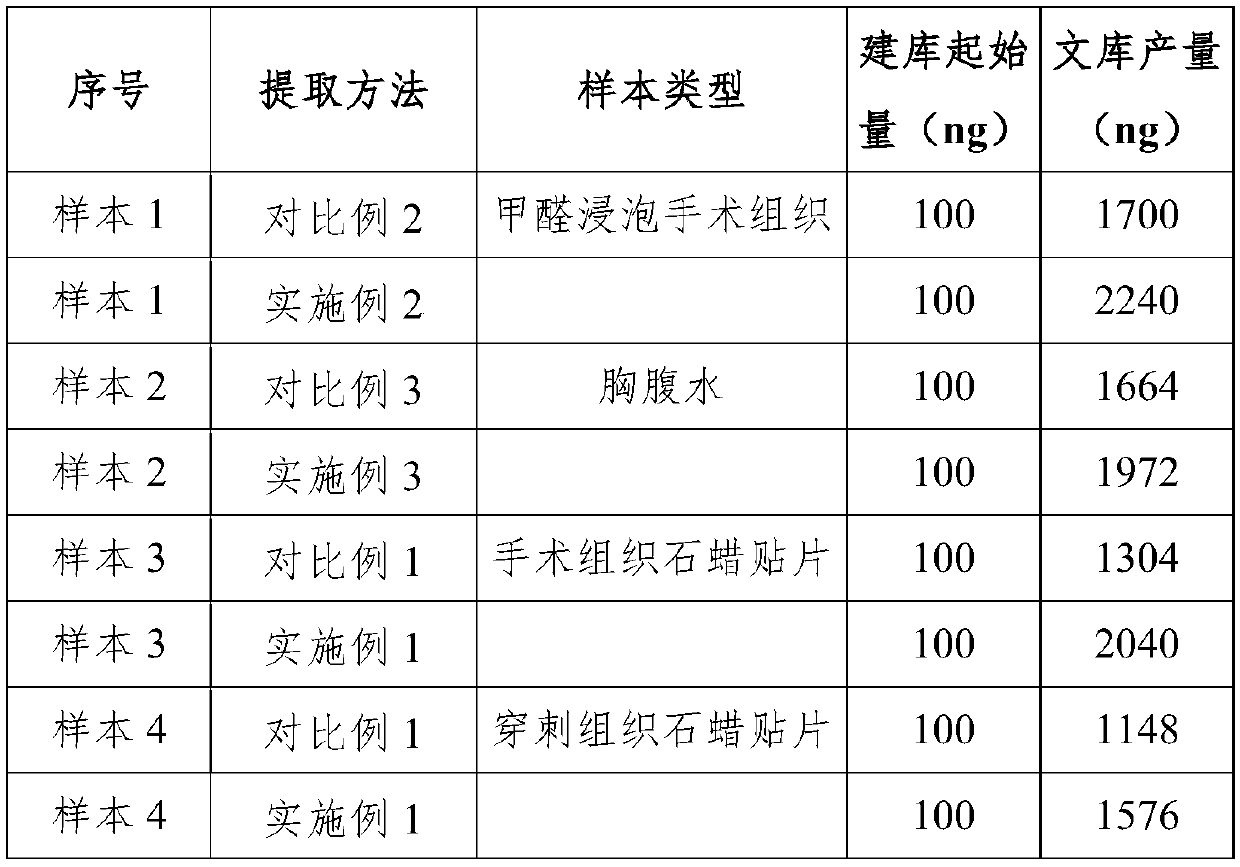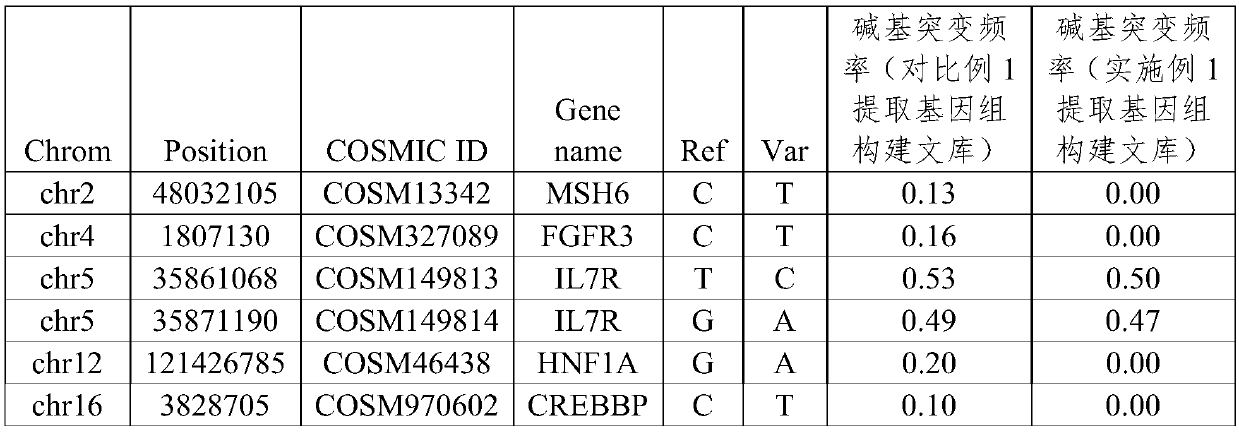Method for extracting genomic DNAs from preserved animal samples
A genome and DNA damage technology, applied in the field of molecular biology, can solve the problems of improving the yield of nucleic acid extraction, cumbersome process of dewaxing, etc., achieving low extraction cost, short operation time, eliminating C>T and G>A artificial effect of mutation
- Summary
- Abstract
- Description
- Claims
- Application Information
AI Technical Summary
Problems solved by technology
Method used
Image
Examples
Embodiment 1
[0057] This embodiment provides a method for extracting genomic DNA from paraffin-embedded animal tissue samples. The extracted samples are the surgical tissue paraffin patch derived from breast tissue of breast cancer patients and the puncture tissue paraffin wax derived from left lung lobe tissue of lung cancer patients. patch, the specific method is as follows:
[0058] (1) Use a clean scalpel blade to scrape a tissue paraffin section sample with an area >10mm×10mm and a thickness of about 5-10μm, transfer it to a prepared 1.5mL centrifuge tube, centrifuge at 12000rpm for 3min, and centrifuge the scraped tissue into the tube. end;
[0059] (2) Add 160 μL of dewaxing solution (the dewaxing solution is n-hexadecane) to the above-mentioned centrifuge tube containing paraffin-embedded tissue. If the sample volume is large or the paraffin content is large, double the amount of dewaxing solution can be used for processing ;
[0060] (3) Add proteinase K to a final concentration...
Embodiment 2
[0072] This embodiment provides a method for extracting genomic DNA from formaldehyde-soaked animal tissues. The difference from the method provided in Example 1 is only step (1) and step (2). In this embodiment, the steps of embodiment (1) (1) and step (2) are combined into step (1): Scrape the formaldehyde-soaked surgical tissue block with a clean scalpel blade, transfer to a prepared 1.5ml centrifuge tube, centrifuge at 12000rpm for 3min, and centrifuge the scraped tissue to tube bottom. All the other steps are the same as in Example 1. The sample extracted in this embodiment is formaldehyde-soaked surgical tissue derived from breast tissue of a breast cancer patient.
Embodiment 3
[0074] This embodiment provides a method for extracting genomic DNA of animal pleural effusion, the difference with the method provided in Example 1 is only step (1) and step (2), in the present embodiment, the step of embodiment (1) ( 1) and step (2) are combined into step (1): Take 200 μl of pleural and ascites fluid into a prepared 1.5ml centrifuge tube, centrifuge at 12000 rpm for 3 minutes, and centrifuge the scraped tissue to the bottom of the tube. All the other steps are the same as in Example 1. The extracted samples in this embodiment are pleural and ascites from lung cancer patients.
PUM
 Login to View More
Login to View More Abstract
Description
Claims
Application Information
 Login to View More
Login to View More - R&D
- Intellectual Property
- Life Sciences
- Materials
- Tech Scout
- Unparalleled Data Quality
- Higher Quality Content
- 60% Fewer Hallucinations
Browse by: Latest US Patents, China's latest patents, Technical Efficacy Thesaurus, Application Domain, Technology Topic, Popular Technical Reports.
© 2025 PatSnap. All rights reserved.Legal|Privacy policy|Modern Slavery Act Transparency Statement|Sitemap|About US| Contact US: help@patsnap.com


